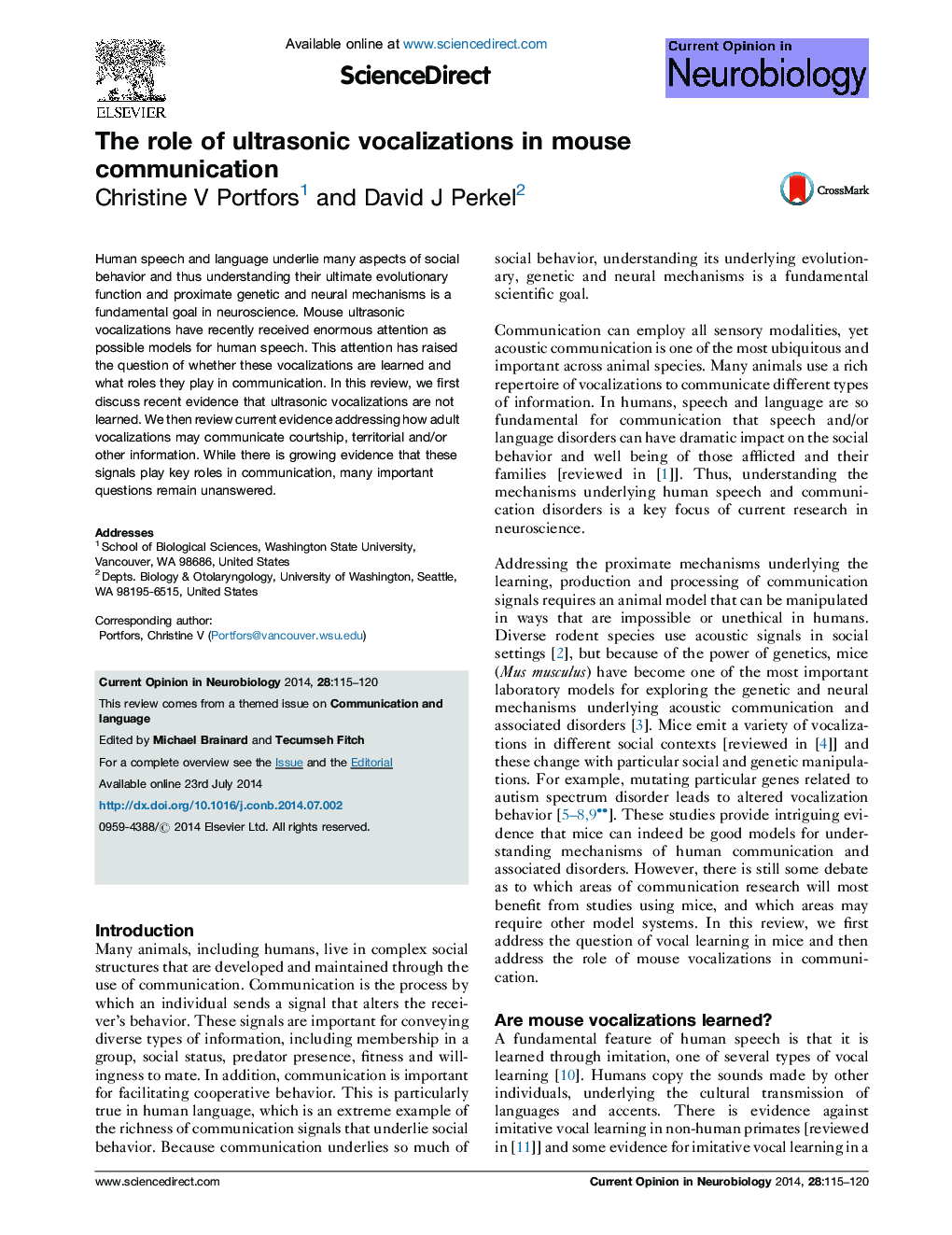| Article ID | Journal | Published Year | Pages | File Type |
|---|---|---|---|---|
| 6266674 | Current Opinion in Neurobiology | 2014 | 6 Pages |
â¢Mice do not show evidence of imitative vocal learning.â¢The lack of vocal learning makes the mouse an excellent model system for understanding the genetic basis of human communication disorders.â¢Mouse ultrasonic vocalizations likely play a role in both courtship and territorial interactions.
Human speech and language underlie many aspects of social behavior and thus understanding their ultimate evolutionary function and proximate genetic and neural mechanisms is a fundamental goal in neuroscience. Mouse ultrasonic vocalizations have recently received enormous attention as possible models for human speech. This attention has raised the question of whether these vocalizations are learned and what roles they play in communication. In this review, we first discuss recent evidence that ultrasonic vocalizations are not learned. We then review current evidence addressing how adult vocalizations may communicate courtship, territorial and/or other information. While there is growing evidence that these signals play key roles in communication, many important questions remain unanswered.
